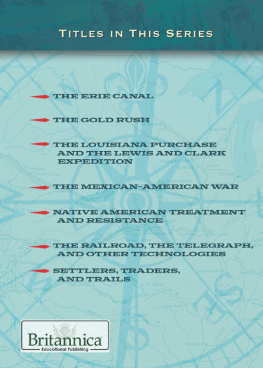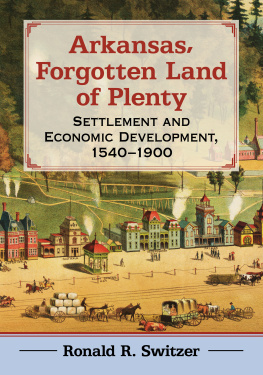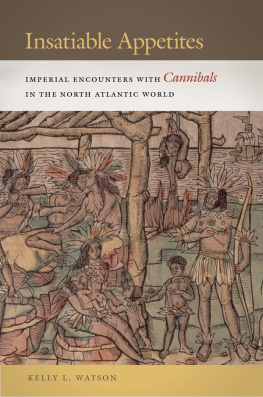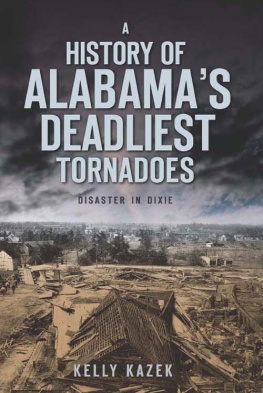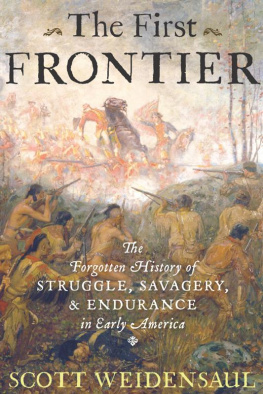Alabamas Frontiers and the Rise of the Old SouthA History of the Trans-Appalachian Frontier
Malcolm Rohrbough and Walter Nugent, editors
Alabamas Frontiers
AND THE RISE OF THE
Old South
Daniel S. Dupre
Indiana University Press
This book is a publication of
Indiana University Press
Office of Scholarly Publishing
Herman B Wells Library 350
1320 East 10th Street
Bloomington, Indiana 47405 USA
iupress.indiana.edu
2018 by Daniel S. Dupre
All rights reserved
No part of this book may be reproduced or utilized in any form or by any means, electronic or mechanical, including photocopying and recording, or by any information storage and retrieval system, without permission in writing from the publisher.
The paper used in this publication meets the minimum requirements of the American National Standard for Information SciencesPermanence of Paper for Printed Library Materials, ANSI Z39.481992.
Manufactured in the United States of America
Library of Congress Cataloging-in-Publication Data
Names: Dupre, Daniel S., 1958- author.
Title: Alabamas frontiers and the rise of the Old South / Daniel S. Dupre.
Description: Bloomington, Indiana : Indiana University Press, [2018] |
Series: History of the trans-Appalachian frontier | Includes bibliographical references and index.
Identifiers: LCCN 2017033858 (print) | LCCN 2017033313 (ebook) | ISBN 9780253031532 (e-book) | ISBN 9780253031525 (cloth : alk. paper) | ISBN 9780253027276 (pbk. : alk. paper)
Subjects: LCSH: AlabamaHistoryTo 1819. | WhitesAlabamaRelations with IndiansHistory. | Southern StatesHistory.
Classification: LCC F326 (print) | LCC F326 .D87 2018 (ebook) | DDC 976.1/01dc23
LC record available at https://lccn.loc.gov/2017033858
12345232221201918
Contents
Acknowledgments
I had thought that Id finished with Alabamas frontier many years ago when I published the book that sprang from my dissertation. Im grateful that Walter Nugent and Malcolm Rohrbough invited me back into those waters and that they proved to be so patient as they waited for me to make good on that invitation. I have learned so much from many historians, anthropologists, and archaeologists who know far more than I do about their particular areas of expertise. I only hope that I did justice to their work as I sketched out the story of Alabamas frontiers across three centuries.
My academic home, the University of North Carolina at Charlotte, has proved a congenial environment since I arrived back in 1989. The College of Liberal Arts and Sciences gave me a semester off as a reward for a two-year stint as chair of the Department of History. That, in addition to another semesters leave through our departments Cotlow Endowment, gave me valuable time to make progress on this book. Kristopher Steele helped track down sources for my first chapter and the interlibrary loan department at Atkins Library made my research much easier. Many of my colleagues at UNCC, including Lyman Johnson, David Goldfield, Gregory Mixon, Mark Wilson, Janet Levy, and Aaron Shapiro, gave me helpful comments on chapters. Christine Haynes went beyond the call of duty as a French historian by reading and commenting on my early chapters and encouraging me to keep on track. Kathleen DuVal, at the University of North Carolina at Chapel Hill, offered helpful comments on my first couple of chapters. I met Johanna Shields, formerly of the University of Alabama at Huntsville, on my first research trip to Alabama when I was a graduate student in the mid-1980s. She has been a friend and a supporter of my work ever since. Johanna read drafts of most of this books chapters and offered advice that invariably improved them, along with words that boosted my morale.
My family has also seen me through the process of writing this book. My father, Vladimir Dupre, read portions of it and would always ask about my progress during our phone calls. My brothers and sisterChris, David, Peter, John, and Susiehave not read the book but they have loved me, which is far more important. Closer to home, my wife, Kathy Consorte, has also offered me her love and encouragement despite having to live with all the preoccupation and mood swings that come with writing a book. She, more than anyone besides me, will be happy that it is done. My two children grew up and left home while I worked on this project. I am proud of this book, but Im much more proud of Rachel and Joe and the people they have become. So it is to them that I dedicate this book, with much love.
Alabamas Frontiers and the Rise of the Old SouthIntroduction
In early September of 1540, Hernando de Soto and hundreds of armed and armored Europeans, along with enslaved Africans, captured Indian porters, and a menagerie of horses, dogs, and pigs, marched down from the Appalachian highlands along the Coosa River and passed across an imaginary line that, far in the future, would demark the boundary of the state of Georgia. You could say that Alabamas frontier history began that day, although that geopolitical division of the early nineteenth century would have been meaningless to either de Soto or the Native Americans he encountered. The Indians who witnessed the passage of the horsemen and foot soldiers through the forests and the fields lived, they believed, at the center of the world, on farmsteads and in small hamlets and the occasional larger towns that, together, constituted individual chiefdoms. The chiefdoms of that region were part of the paramount chiefdom of Coosa, which stretched from what would become southeastern Tennessee, through northwestern Georgia, into the northeast corner of Alabama. De Soto himself understood that he was passing through Coosa; he had, after all, fed his army on the maize, fruit, nuts, and meat of the chiefdom for weeks and now was moving southwestward with the chief and his sister in tow as hostages. But to his eyes this was just a small portion of a larger world that the Spanish called La Florida, an extensive if indeterminate land stretching north and west from the Gulf and Atlantic coasts. The king had named de Soto governor of those lands and, in September, he was eager to push on to see if his dreams of wealth might be realized in the next chiefdom.
The Spanish called expeditions like that of Hernando de Soto entradas, which literally meant entrances: part exploratory marches, part treasure hunts, part displays of martial intimidation and conquest. If Howard Lamar and Leonard Thompson are right in their definition of a frontier as a territory or zone of interpenetration between two previously distinct societies that opens when the first representatives of the intrusive society arrive, then de Sotos entrada marked the beginning of Alabamas frontier, not as a straight line between imaginary states but as a contested borderland.








